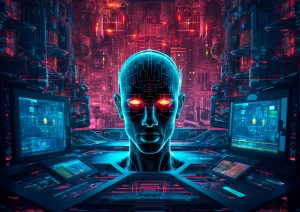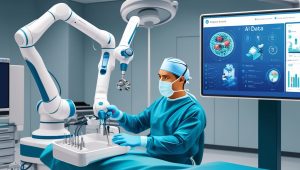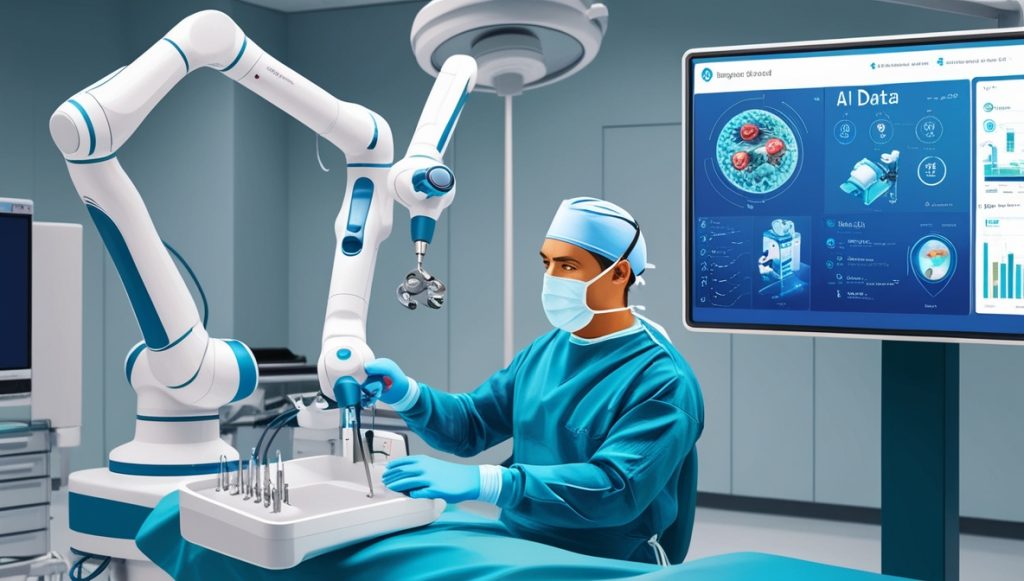
What if your next surgery could be guided by artificial intelligence, ensuring unparalleled precision? Sounds futuristic, right? But it’s happening right now, and AI is revolutionizing the field of robotic surgery in ways we couldn’t have imagined just a decade ago.
In this blog, we’ll explore how AI is enhancing precision in robotic surgery, improving outcomes for patients, and transforming the way surgeons approach complex procedures. This is not just another trend—this is the future of healthcare.
How AI and Robotic Surgery are Changing the Game
When we talk about robotic surgery, many people imagine a robot performing the operation while the surgeon sits back and watches. In reality, it’s quite different. Robotic surgery typically involves the surgeon controlling robotic arms from a console, using their skills and expertise to direct every move. But now, AI is stepping in, and it’s changing the game entirely.
Robots are already excellent at precision, but add artificial intelligence to the mix, and you’ve got a tool that can analyze vast amounts of data, predict outcomes, and even assist in decision-making during surgery.
Here’s the kicker: AI can help reduce human error and improve surgical accuracy, leading to better results for patients. That’s huge, especially in delicate or high-risk procedures where even the smallest mistake can be costly.
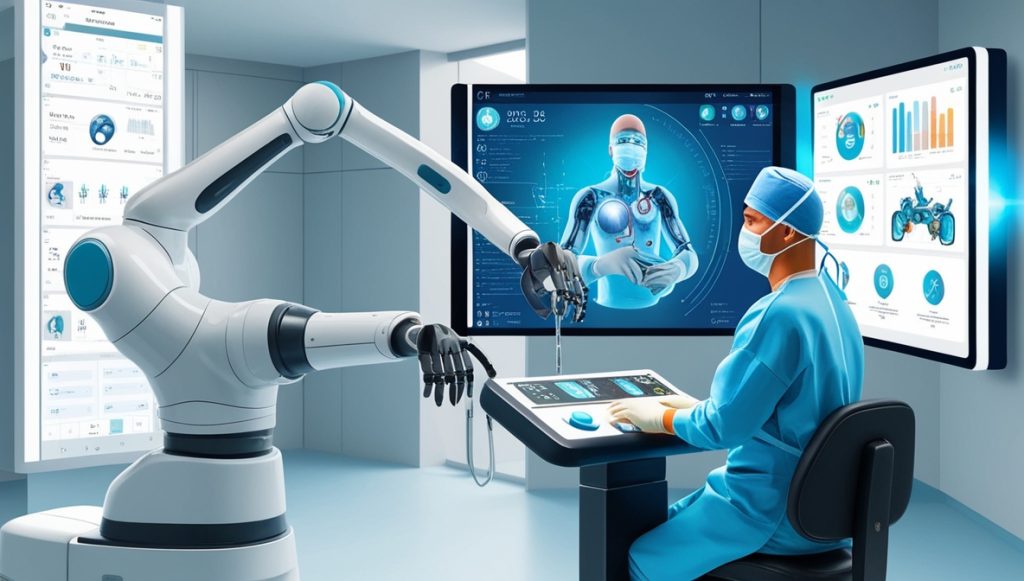
AI-Powered Precision: How Does it Work?
So, how exactly does AI enhance precision in robotic surgery? Let’s break it down:
- Data-Driven Decisions: AI algorithms can analyze thousands of past surgeries, patient histories, and real-time data to offer predictive insights. This helps surgeons anticipate potential complications and adjust their approach accordingly.
- Real-Time Feedback: During a procedure, AI can provide real-time guidance, offering suggestions to improve accuracy. Think of it as a virtual co-pilot, helping the surgeon stay on track, especially during complex or unplanned situations.
- Enhanced Imaging: AI integrates with advanced imaging technologies like CT scans or MRIs, offering a 3D view of the surgical site. These high-definition visuals help surgeons navigate the human body more effectively, reducing the chance of damaging surrounding tissues.
- Pattern Recognition: AI can recognize patterns in tissue or blood flow that a human eye might miss. For example, AI can distinguish between healthy and unhealthy tissue, guiding the robotic instruments with more precision than even the steadiest human hand could achieve.
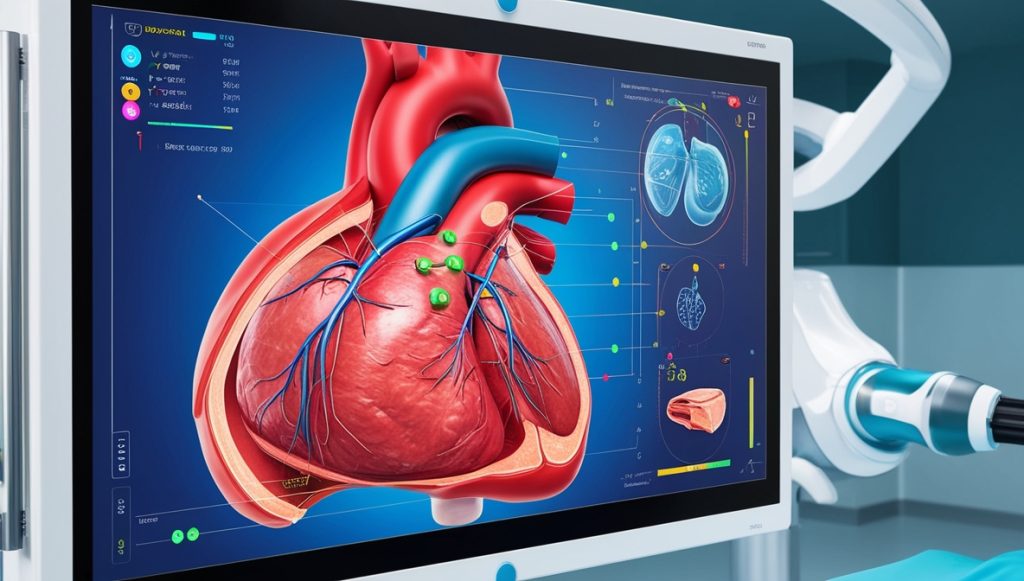
Why AI-Powered Robotic Surgery Matters to You
If you’re wondering why this matters, let’s take a moment to think about the impact on patients. Whether you’re scheduled for surgery yourself or just curious about medical advancements, understanding the benefits of AI in surgery can be life-changing.
Here are a few key reasons why AI-enhanced precision in robotic surgery is a big deal:
- Less Risk, Faster Recovery: AI allows for smaller incisions and more targeted interventions. This means less trauma to the body, which in turn reduces recovery time. You’ll be back on your feet faster and with fewer complications.
- Increased Safety: Surgeons can make better decisions with AI’s real-time guidance. For example, if the AI detects a potential complication during surgery, it can alert the surgeon, helping them to address the issue immediately. This reduces the likelihood of post-surgical complications.
- More Consistent Outcomes: Since AI relies on vast amounts of data and patterns, it can help standardize surgical procedures, reducing variability in outcomes. This is especially important in hospitals where access to the most experienced surgeons might be limited.

The Surgeon’s Perspective: Partnering with AI
It’s not just about the robots and the AI—it’s about the surgeon’s ability to leverage these technologies to do their job better. Surgeons who work with AI-powered robotic systems often report that these tools make their work not only more accurate but also less stressful.
Imagine performing a highly delicate operation and knowing you have a system in place that can guide you with millimeter-level precision. That’s what AI offers: a partner that enhances human capability rather than replaces it.
From my own conversations with healthcare professionals, many are excited about the collaboration between AI and human expertise. The key is that AI doesn’t take over the surgery. Instead, it supports and amplifies the surgeon’s decision-making, enabling a more effective and precise outcome.
Challenges and Future Developments
While AI is making great strides in robotic surgery, it’s important to note that there are still challenges to overcome.
- Trust and Adoption: Not all surgeons or patients are fully comfortable with the idea of AI in the operating room. There’s still a learning curve, and some are concerned about over-reliance on machines.
- Data Privacy: AI systems require access to vast amounts of patient data to function effectively. Ensuring this data is protected is a top priority for healthcare providers.
- Cost: AI-powered robotic systems are expensive, and not all hospitals can afford to implement them. However, as technology advances, we can expect these systems to become more accessible.
Looking ahead, the future of AI in robotic surgery looks incredibly promising. We may soon see even more advanced systems capable of performing surgeries autonomously or assisting surgeons with more complex procedures like brain or heart surgery.
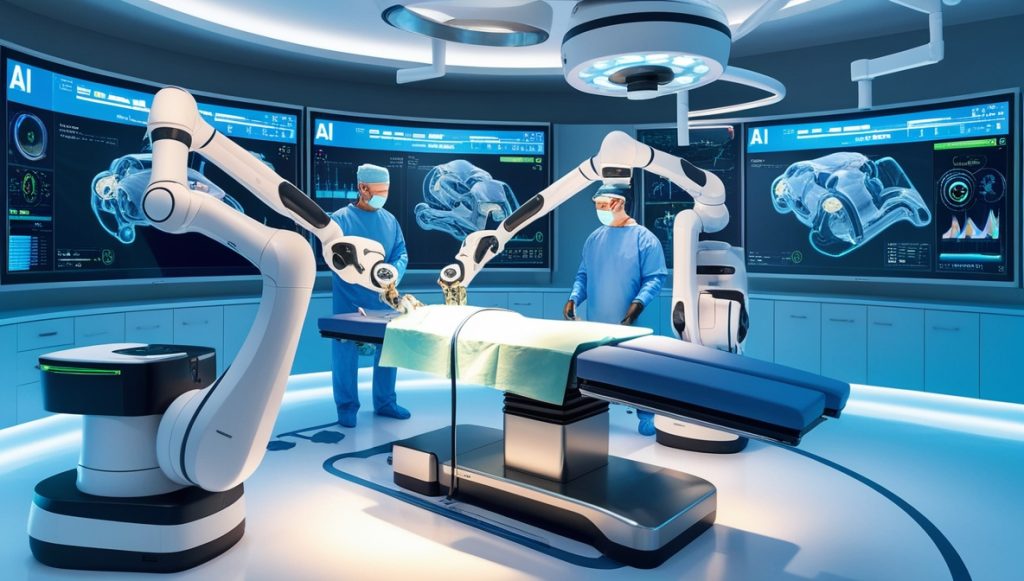
Conclusion: The Future of Surgery is Now
As AI continues to advance, its role in enhancing precision in robotic surgery will only grow. We’re entering an era where surgeries are safer, more accurate, and more predictable than ever before. The blend of human skill and AI-powered technology is transforming healthcare, making it more efficient and effective for patients and doctors alike.
What does this mean for you? If you or a loved one ever face the prospect of surgery, the likelihood of encountering AI-enhanced robotic surgery is rapidly increasing. You can feel confident knowing that this technology aims to improve outcomes, minimize risks, and offer a smoother recovery.
The future of healthcare is here, and AI in robotic surgery is at the forefront of that transformation. It’s an exciting time to be alive, and we’re just scratching the surface of what’s possible.
Q&A
What is AI’s main role in robotic surgery?
AI primarily enhances precision by providing real-time data, predictive insights, and advanced imaging during surgery. It assists surgeons in making better decisions, reducing errors, and improving surgical outcomes.
Are there any risks associated with AI in surgery?
While AI technology is highly advanced, there are challenges such as data privacy concerns and the cost of implementing AI systems. Additionally, some surgeons and patients may be hesitant to fully embrace AI in the operating room.
How does AI improve recovery time for patients?
AI allows for more precise surgical interventions, which typically involve smaller incisions and less trauma to the body. This results in faster recovery times, less pain, and fewer complications for patients.
Can AI replace surgeons in the future?
AI is not meant to replace surgeons but to assist them. It enhances their abilities, provides valuable insights, and improves precision. However, human expertise remains essential in making critical decisions during surgery.
Is AI used in all types of robotic surgery?
AI is becoming more common in various types of robotic surgeries, especially in fields like orthopedics, gynecology, and urology. However, it is not yet universally adopted and is still being developed for more complex procedures.
